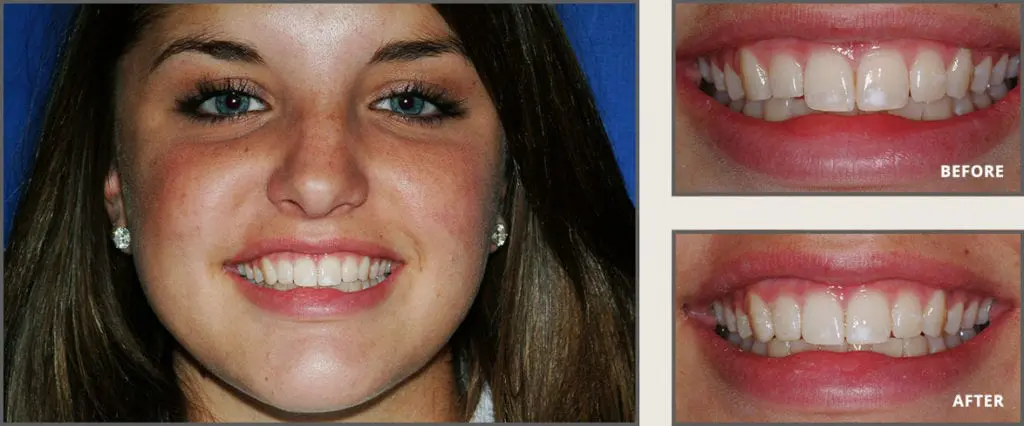Cosmetic Tooth Bonding in Plano, TX
Teeth bonding is an affordable and effective cosmetic dentistry treatment that can deliver natural-looking results. We provide long-term protection for your tooth enamel by coating your teeth in a protective layer. Furthermore, we can use bonding for restorative and cosmetic purposes. Dr. Mark Sowell and Dr. Sara Chen, your dentists in Plano, Texas, provide dental bonding to patients for the following purposes:
- Repair decayed teeth
- Repairs cracked or chipped teeth
- Improves the appearance of stained teeth
- Closes spaces or gaps between teeth
- Lengthens the appearance of teeth
- Alters the shape of teeth
- Provides a cosmetic alternative to metal amalgam fillings
- Protects an exposed portion of the tooth’s root because of receding gums
What is Teeth Bonding, and Why Should I Get It?
Cosmetic teeth bonding can enhance the appearance of any smile in as little as one office visit. Composite resins fill cavities and provide similar benefits as porcelain veneers or dental crowns. However, they are less invasive and more affordable. Sometimes, patients use bonding to improve the appearance of their smile until they are ready for a more permanent solution.
There are two types of cosmetic dental bonding: transitional bonding and direct bonding. These can last up to 10 years, depending on the type and extent of teeth bonding.
Direct dental bonding means placing tooth-colored composite fillings on a single tooth or multiple teeth. Dr. Sowell and Dr. Chen do this to restore function, size, and shape or even enhance the shade of your teeth. The success of these direct bondings depends on Dr. Chen’s and Dr. Sowell’s expert sculpting skill and ability to free-hand.
Transitional bonding is a more temporary procedure for anything from a mock-up to a full-mouth rehabilitation. We call it “transitional” because it lets the patient transition into more permanent treatments. Transitional bonding also allows Dr. Mark Sowell and Dr. Sara Chen time to work out any bite-related and esthetic issues with your smile.
Transitional bonding is an important tool for such accomplished cosmetic dentists in Plano, TX. We most often use transitional bonding when a patient needs a phased solution to their problem. The result is usually 80% as nice as an ideal ceramic or porcelain result. Dr. Sowell and Dr. Chen are masters at handling, contouring, layering, and polishing tooth-bonding compounds.
Tooth Bonding FAQs
How long does dental bonding last?
Tooth bonding can last for several years or more with proper dental care. Our dentist can quickly replace tooth bonding with porcelain ceramics in a phased approach over time. Often, dentists use transitional bondings for younger teenage and 20-something patients because they are more affordable than ceramics.
What is the tooth bonding procedure like?
Dr. Sowell and Dr. Chen will begin the procedure by preparing your teeth. This involves removing a minimal amount of surface structure to allow them to sculpt the composite bonding material into place. They will directly apply a tooth-colored resin and sculpt it into the desired shape for a natural result.
The entire process is quick. You will be able to use your teeth and mouth as soon as you leave our office.
Can you put veneers over tooth bonding?
In theory, you can, but some dentists do not recommend it. It is best to replace your existing bonding with a veneer. This will ensure a seamless fit and provide more protection for your tooth.
Tooth Bonding Before & After

In the above image, the upper right canine and lateral teeth wore down because of teeth grinding. Dr. Sowell used direct tooth bonding to restore her teeth. He carefully made sure to match the bonding with the anatomy and color of her natural teeth. The repair to her canines and lateral is undetectable and blends in seamlessly with her natural smile.
